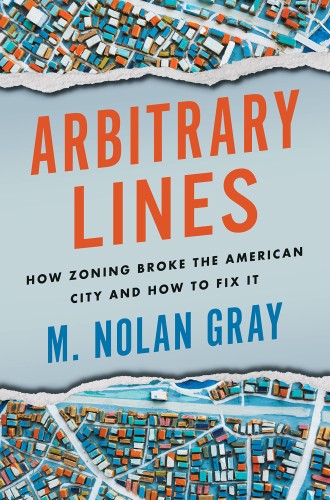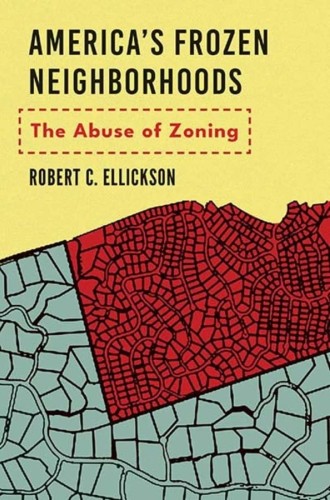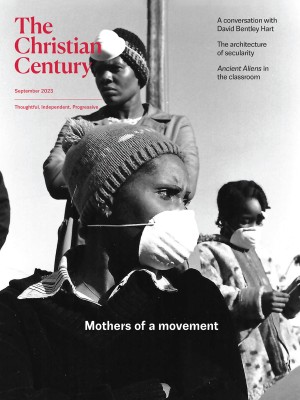The unzoned city of God
Two new books help explain one of the main public policy drivers of the affordable housing crisis.
If affordable housing has become a watercooler conversation of our time, zoning reform is one of the next logical topics of interest. In their new books, Nolan Gray and Robert Ellickson take up the topic of zoning. Both assign the bulk of solving the broken system to the same group of people, but the books have quite different audiences and styles.
It might be helpful to pause here and provide a dictionary definition of zoning. Merriam-Webster defines it as “the act or process of partitioning a city, town, or borough into zones reserved for different purposes (such as residence or business); also : the set of ordinances by which such zones are established and regulated.” Why zoning was created is, perhaps surprisingly, a question with more than one definitive answer. There are also multiple answers to whether zoning is good or bad and whether it can be reformed. Gray and Ellickson’s books can help launch important discussions about where we started with zoning and where we might go as municipalities and as a country.
Read our latest issue or browse back issues.
Gray is a professional city planner with experience in zoning policy in New York City. He currently lives in Los Angeles, where he is completing a PhD in urban planning. Arbitrary Lines is written not only for city planners but for citizens like me who care about city planning but hold no degrees or formal training. I have been to just enough city council and planning and zoning meetings to laugh somewhat knowingly at Gray’s anecdotes and asides. For example, after encouraging readers to explore their own city’s zoning map, Gray writes, “Neither I nor Island Press can be held liable for any emotional distress you experience while trying to make heads or tails of your local zoning code!”
Arbitrary Lines has more in its favor than humor. It incorporates stories and snapshots—good and bad—from various cities into a compelling explanation for how we got here as a country. Crucial to this history is the way Gray pulls apart zoning from city planning; they are not synonymous. Zoning is “how government regulates land uses and densities on private land in most US cities and suburbs.” In an appendix titled “What Zoning Isn’t,” he provides “a wonky exploration of the broader planning ecosystem beyond zoning—which regulates everything from stormwater runoff to building safety.”
More important is a thesis that Gray returns to throughout the book in various ways: that “zoning is not a good institution gone bad.” Rather, Gray argues, “zoning is a mechanism of exclusion designed to inflate property values, slow the pace of new development, segregate cities by race and class, and enshrine the detached single-family house as the exclusive urban ideal—always has been.” While it is commonly argued that zoning began at a time when industrial plants could too easily invade a residential neighborhood, Gray unpacks examples such as Berkeley, California’s 1916 zoning ordinance to show how quickly the intent of zoning transformed into economic and racial segregation.
Ellickson, who taught property and urban law at Yale Law School, seems to have written America’s Frozen Neighborhoods for academics and attorneys. The writing is fairly technical and weighed down with jargon. I assume that an expert in property law would hum along through the book with no problem, but as I plodded through it, I found myself a bit resentful at times. Still, I am glad I persisted because the book made me look hard at two disciplines I respect but do not read about regularly, zoning statistics and market economics.
Ellickson takes a geographic approach, using case studies to offer very detailed tours of three areas: Silicon Valley, the Greater New Haven area, and the northwestern portion of Greater Austin. Readers will appreciate learning the histories of these three areas, how zoning was implemented, and how zoning shaped the areas. The middle portion of the book contains a rather dry narrative about the preservation of single-family neighborhoods through means such as restrictive covenants. The prose picks up again when Ellickson proposes reforms for zoning practices. His discussion of benefit-cost analysis will, I believe, be a helpful contribution to both academics and practitioners. His chapter on the role of the federal government includes a section favoring housing vouchers that had me cheering.
Both Ellickson and Gray put most of the responsibility for the reform of zoning on state legislatures. It was fascinating to read these arguments as I watched various state legislatures, including my own, in action around the country. In the end, both authors convinced me. They each point out that local politics is hyperlocal—something I’ve witnessed firsthand. Further, it was the states that got us into this mess to begin with. As Ellickson contends, “a state should preempt many of the land use choices that its local governments now are free to make. This would correct the error that the Herbert Hoover panel made in the 1920s when it recommended that states delegate almost unbridled zoning authority to local governments.” His specific recommendation is that each state legislature establish an agency whose sole mission is “to eliminate local regulatory barriers that impede production of housing, particularly least-cost market-rate dwellings. That would focus the agency’s attention on the chief problem that local zoning abuses create.”
A bit more optimistic about local government, Gray lays out a variety of ways zoning can be reformed and provides examples of cities that are getting this work done. However, he admits, “the reality is that it will take oversight from higher levels of government to get most US cities, suburbs, and towns to make any meaningful reforms to zoning.” Here he gives examples of bipartisan work being done in Oregon, Oklahoma, California, and Texas. Unlike Ellickson, however, Gray does not limit solutions to mere reform. After diving into why zoning reform is not enough, he argues finally for abolishing zoning.
To illustrate the viability of this position, he takes readers on a fabulous tour of Houston, which he calls “The Great Unzoned City.” In a chapter called “Planning after Zoning,” Gray provides a hopeful and imaginative outline of what city planners could be and what city planning could be without zoning. This chapter, and really the whole book, may convince me to buy copies of the book for the city planners and consultants I know who still love their work but want to do it differently, chiefly without the constraints of restrictive zoning.
An added benefit of reading Arbitrary Lines was my discovery of its publisher, a nonprofit started in 1984 called Island Press. A quick review of the current catalog revealed books on many topics I care about, so I know that Gray’s will not be the last Island Press book I read. Readers who want theology to be in conversation with other disciplines will be well served by keeping an eye on this press.
What does the Christian tradition in particular have to say about zoning? With what lens or with what ears does the life of faith bring us to this conversation? As I read Ellickson and Gray, I kept returning to a few biblical threads. One is about power and wealth: we are repeatedly warned that the two are likely to do our posture toward the gospel more harm than good. I also wondered multiple times if we Americans have made the single-family neighborhood a golden calf. If we have, does repentance not look like zoning reform or perhaps even the abolition of zoning? And I thought of John of Patmos’s vision of the New Jerusalem in Revelation 21, which culminates with, “Its gates will never be shut by day—and there will be no night there” (21:25). Beyond the measurements and jewels, maybe we can simply let this verse stir our imaginations for what a faith-inspired city could and should look like.







